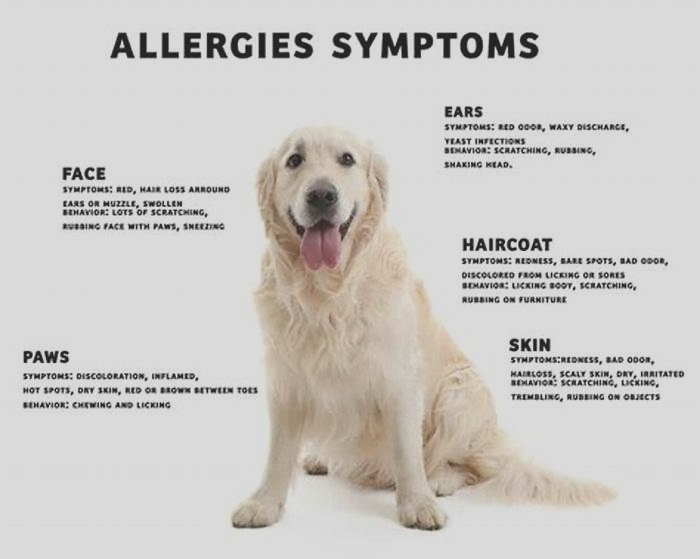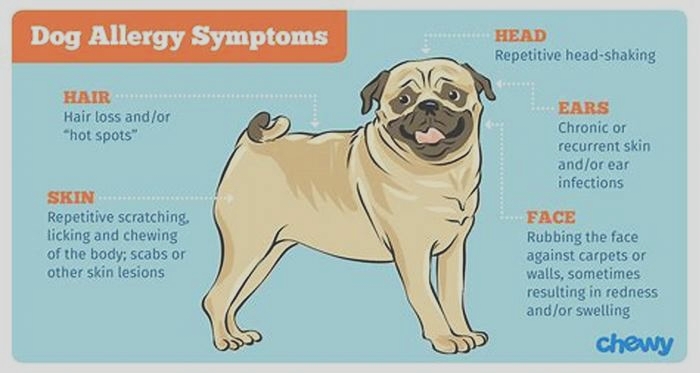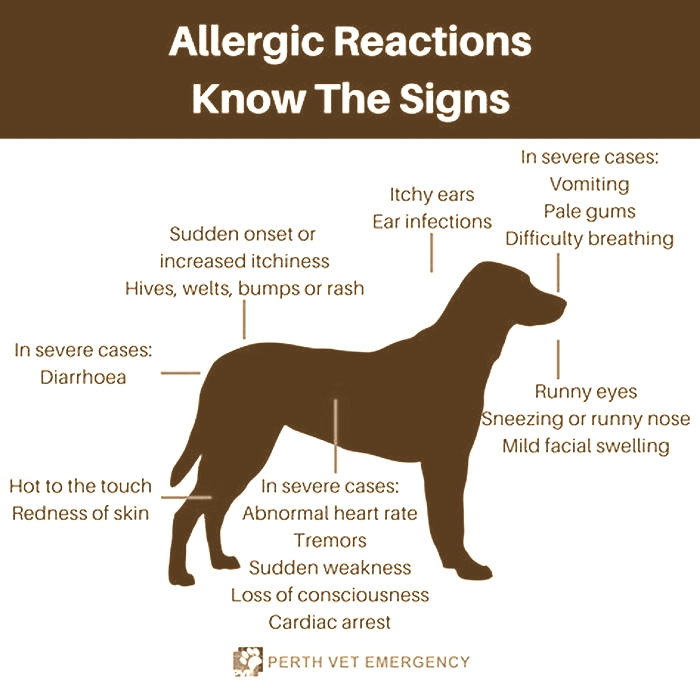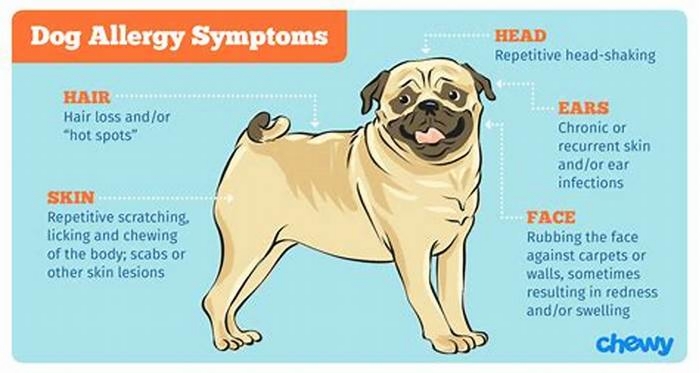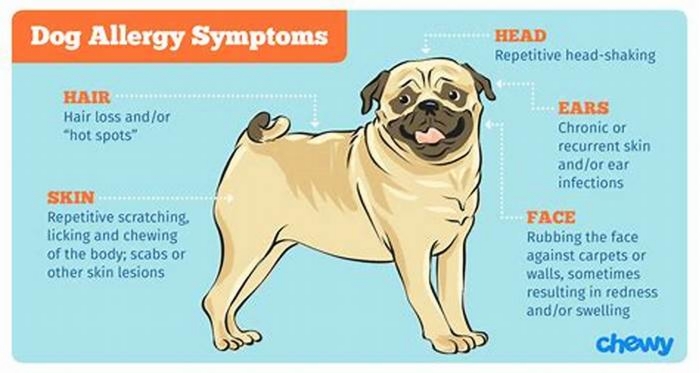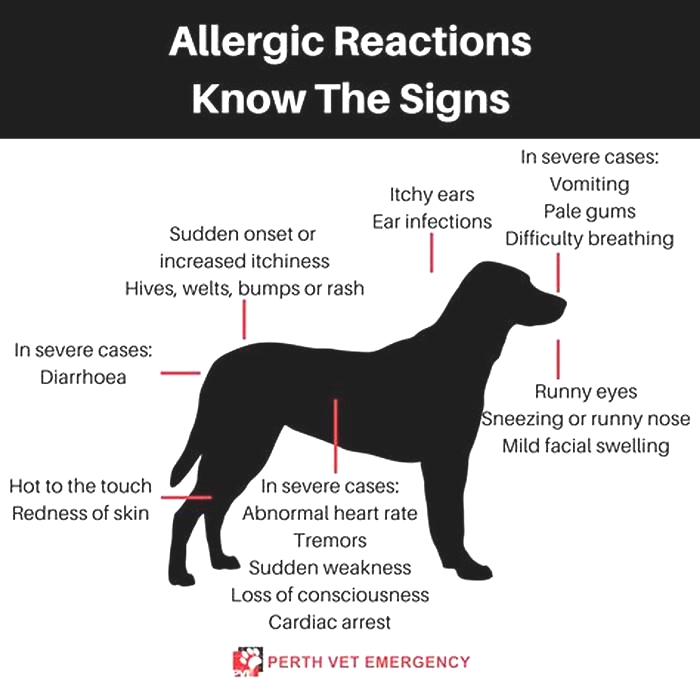How long does an allergic reaction to a dog last
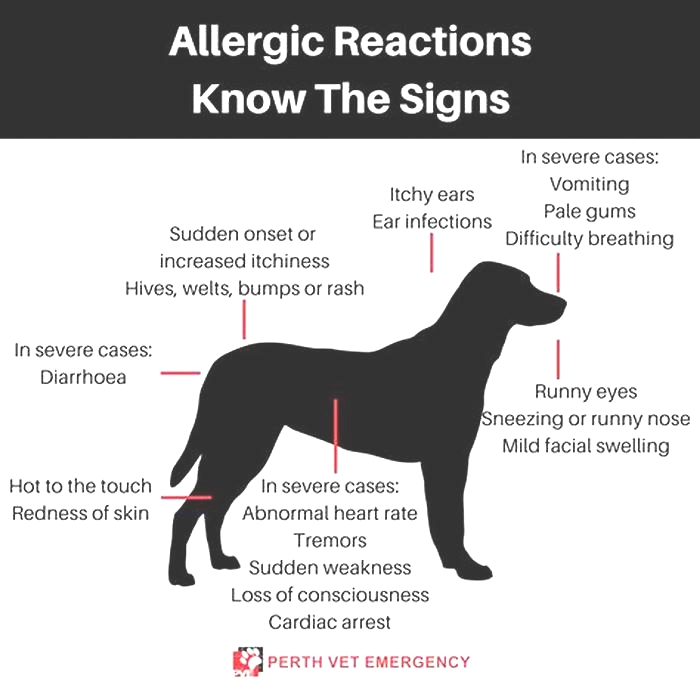
Is your dog having an allergic reaction? Watch out for these warning signs
Pollen, chemical fumes, insect bites, and certain types of food are all common allergens in humans. Symptoms range from mild annoyances, such as itchy, watery eyes, to life-threatening anaphylaxis. For the most part, its easy to tell when a fellow human is suffering from an allergic reaction. But what about a dogs allergic reaction? They might not be as immediately recognizable as your seasonal allergies, but there are signs to keep an eye out for if you suspect your dog has allergies. Well tell you what to look for, what you can do to help, and give you a general idea of how long your precious pooch will have to deal with the symptoms of an allergic reaction.
How can I tell if my dog is having an allergic reaction?
Just like you, its possible for your dog to suffer from unique allergies. For brevitys sake, well cover the four most common causes of allergic reactions in dogs.
Acute allergic reactions
Unlike a chronic allergic condition, an acute allergy is a sudden response to an irritant, such as a sting or bite from an insect. There are other causes of acute allergies in dogs, but stings and bites are the most common. Swelling, itching, and vomiting are common, but dogs suffering from anaphylactic shock could experience difficulty breathing, show signs of cyanosis a bluish tint to the lips and gums caused by the lack of proper blood oxygenation and might even lose consciousness.
Food allergies
Yet another common allergy dogs suffer from, a food allergy often causes stomach upset like nausea, vomiting, and diarrhea. That being said, some dogs might develop skin conditions, begin to show signs of brittle fur, or might even suffer from the loss of fur. If your pup begins scratching at himself while suffering from gastrointestinal issues, its very possible hes allergic to something in his kibble. To determine the allergen, your dogs vet might recommend an elimination diet, or he may prescribe a formula developed for dogs with food sensitivities, such as this one from Hills Prescription Diet.
Seasonal allergies
Some people are overjoyed when spring rolls around each year. Others dread the sudden flare-up of seasonal allergies. And your dog might concur! Just like people, dogs can suffer from seasonal allergies with similar symptoms, such as puffy, watery eyes, itchy skin, ear infections, a running nose, and sneezing fits. While you should speak with your vet to make sure your dogs condition is related to seasonal allergies, if you notice him sneezing at the same time every year, thats likely the case.
Skin allergies
Just like some people have sensitive skin, so do some dogs. Whether your pooch has been exposed to an irritant from fleas, ticks, plants, chemicals, or even the detergent you use to wash your linens, skin allergies are miserable. Look for symptoms like hives, dry and flaky skin, redness of the skin, and itching. Make sure your precious pooch is on a flea and tick preventative, take precautions when growing certain types of plants and flowers, and use a gentle, fragrance-free detergent to wash any fabrics your dog comes into contact with.
What can I give my dog for an allergic reaction?
When it comes to treating your dogs allergies, look no further than your own medicine cabinet. Benadryl, a common antihistamine used to treat allergies, works as effectively in dogs as it does in humans. Thanks to the main ingredient, diphenhydramine HCI, Benadryl combats the symptoms of allergies with minimal side effects. Unfortunately, the FDA has yet to approve Benadryl for veterinary use, but vets frequently recommend the use of Benadryl in treating dogs and cats with allergies. Make sure to administer the correct dosage for your dogs weight, and speak to your vet before giving Benadryl if your pup is pregnant or suffers from hypertension, seizures, hypothyroidism, cardiovascular disease, glaucoma, or allergic lung disease.
How long will my dogs allergic reaction last?
As much as we want to give you a cut-and-dried answer, the truth is well, it depends on the allergen and the severity of your dogs reaction. If your dog is suffering from a skin allergy, you can look for the redness and irritation to last somewhere between two and three weeks. If your pup has seasonal allergies, you can expect to see symptoms for as long as the allergen is in bloom. Allergic hives generally appear within minutes of exposure to an allergen, and they can fade just as quickly. However, hives can also last up to 48 hours, so dont be overly concerned if they dont clear up right away.
Final thoughts on allergies
Allergies are as uncomfortable for dogs as they are for us. Whether your pup is suffering from an insect sting, a skin reaction, seasonal allergies, or a food allergy, we recommend taking your pup to the vet for a thorough checkup. Antihistamines can help manage symptoms, but your vet might also prescribe oral, injectable, or topical steroids to help control your dogs allergic reaction. Lastly, if your dog experiences difficulty breathing, you should take him to the emergency vet right away.
Editors' Recommendations
Allergic reactions in dogs
Types of reaction
Bee stings
Most dogs stung by a bee, or another insect, develop redness, pain, and swelling around the site, but recover well (on their own, or with the help of an antihistamine medication). However, just like us, some dogs are allergic to insect stings and suffer much more serious symptoms. Call your vet for advice if an insect has stung your dog.
Medication and vaccine reactions
Although its extremely rare, just like us, some dogs are allergic to certain medicines and vaccinations. Fortunately, most medication and vaccinationreactions are mild, for example developing itchy skin after a flea treatment, or feeling slightly off-colour after a vaccination. However, severe reactions do sometimes happen and cause serious symptoms that require immediate veterinary attention.
Fleas, food, pollen and other allergic skin disease
Allergic skin disease (often caused by fleas, food and/or pollen) is a different type of allergy that causes a low-level, ongoing problem, (not a sudden, acute reaction). Follow the link for more information.
Dog Hives
What Are Dog Hives?
Hives (also referred to as urticaria) are areas of the skin that appear reddened and raised. Just as with humans, hives can be very itchy for your dog. Theyre a sign that an allergy is causing the immune system to overreact.
Hives can appear very quicklyand disappear just as quickly. The raised red area of the skin is referred to as a wheal, and it can appear anywhere from a few minutes to hours after exposure to an allergen. Wheals can appear anywhere on your dogs body, but theyre usually found on the head, neck, back, stomach, and legs.
In mild cases, the hives will generally disappear within 12-48 hours after contact with the allergen. However, because of the risk that the reaction can worsen to dangerous swelling of your dogs airways or a serious allergic reaction called anaphylaxis, you should seek out treatment any time you see hives on your dog. This is especially true for hives that occur on the face or around the throat, which can lead to dangerous swelling and possible blockage of the airways.
Symptoms of Dog Hives
Red raised areas of skin called wheals, which can occur anywhere (including mucous membranes) but are most commonly seen on the head, neck, back, abdomen, and legs
Intense itching
Excessive drooling if the mouth is swollen
Swelling (angioedema), which is particularly concerning when it involves the face and respiratory system and can have severe and life-threatening consequences
Causes of Dog Hives
The allergen that causes the hives may be environmental, chemical, or dietary. Any allergen your dog is sensitive can also lead to hives. Common causes include:
Insects bites, chemical contact, and medications are the most common.
How Vets Diagnose Hives
Your vet will closely examine your dog to locate the distinctive wheals associated with hives. Wheals typically have hair on them, and may appear in clusters. Beyond the physical examination, other parts of the diagnosis include:
Any history you are able to provide; be as thorough as you can in describing allergens your dog might have come into contact with and when and where you first saw the hives
Your dogs response to treatment
Treatment for Dog Hives
Dogs with hives usually respond quickly to treatment, which may include:
At-home treatments may include:
Cold compresses over the hives or swollen areas to give relief from itching
Antihistamines, but only under the supervision of your vet
Management of Dog Hives
Work with your vet to determine the cause of the hives, using both your dogs health history and history of exposure to allergens. Depending on the cause and the frequency, your vet may recommend:
Allergy testing to confirm environmental allergens
Immunotherapy treatment to desensitize your dog to specific allergens
A food trial to find ingredients that cause a reaction and develop specific dietary recommendations
Dog Hives FAQs
Are dog hives an emergency?
Yes. Hives indicate an allergic reaction within the body. Although the hives themselves are mostly just uncomfortable, they could lead to very dangerous complications, including anaphylaxis and death. Its best to treat even mild cases of hives.
What can I give my dog for hives?
It is important to speak to your veterinarian before giving your dog any medication. The vet may recommend certain medications to give your dog now or to have ready for future episodes.
How long do hives last?
Hives can disappear within a few hours or last up to 48 hours.
Can anxiety cause hives in dogs?
Theres a small chance that psychological stress can cause dog hives, but generally, anxiety merely worsens hives that are already present.
Should I take my dog to the vet for hives?
Yes, hives indicate a larger issuean allergic reactionand require treatment to make your dog comfortable and keep the reaction from progressing.
What do hives look like on a dog?
Hives are red, often swollen areas of skin that may be very itchy. They can be anywhere on the body, but youll often spot them on your dogs head, neck, back, stomach, or legs.
What foods cause hives in dogs?
There is no one food that generally causes hives in dogs. However, if your dog is allergic to a particular food or ingredient, that can cause hives for your individual dog.
A Quick Guide To Allergic Reactions in Dogs

Dr. Justine Leediscusses allergic reactions in dogs. For more from Dr. Lee, find her onFacebook!
Ever have an allergic reaction? The same can happen to dogs too! Allergic reactions are a very common cause for midnight visits to the emergency room for dogs.Allergic reactions are often secondary to exposure to some type of antigen (an allergen). Unfortunately, we often never know the cause for the allergic reaction, but it can be due to numerous causes such as the following:
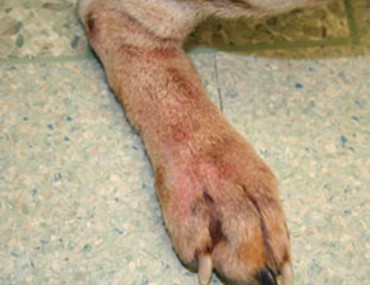 Drugs (like vaccines, medications, antibiotics, etc.)
Drugs (like vaccines, medications, antibiotics, etc.)- Chemicals in the environment (household cleaners like carpet cleaners, air fresheners, etc.)
- Bug bites (due to bee or wasp stings)
- Common natural allergens (like pollen, mold, etc.)
- Anything!
In dogs, signs of an allergic reaction include:
- Puffy face (e.g., swelling of the face and body)
- Hives
- Itchiness
- Redness of the skin
- Agitation/restlessness
- Feeling hot to the touch
Though rare, dogs can experience life-threatening reactions but these are less common. Signs of severe allergic reactions that warrant an immediate visit to an emergency veterinarian include:
- Collapse
- Difficulty breathing due to inflammation or swelling of the throat/airway
- Shock (e.g., an elevated heart rate, low blood pressure)
- Abnormal heart rhythm
Treatment for an allergic reaction typically includes:
- Antihistamines (like Benadryl or diphenhydramine)
- Corticosteroids (like dexamethasone or prednisone)
- And rarely, epinephrine (for severe life-threatening reactions)
In severe cases, epinephrine, oxygen, corticosteroids, blood pressure and heart monitoring, and 24/7 care are imperative for best outcome and survival.
With mild allergic reactions, you can consult your veterinarian about just treating with Benadryl at home (make sure the Benadryl doesnt have any added other ingredients). The dose of Benadryl is typically 1 mg per pound of weight of your dog (so a 50 pound dog would get 50 mgs of Benadryl).When in doubt, know what warning signs to look for when it comes to an allergic reaction to keep your pet safe.
If you have any questions or concerns, you should always visit or call your veterinarian they are your best resource to ensure the health and well-being of your pets.


